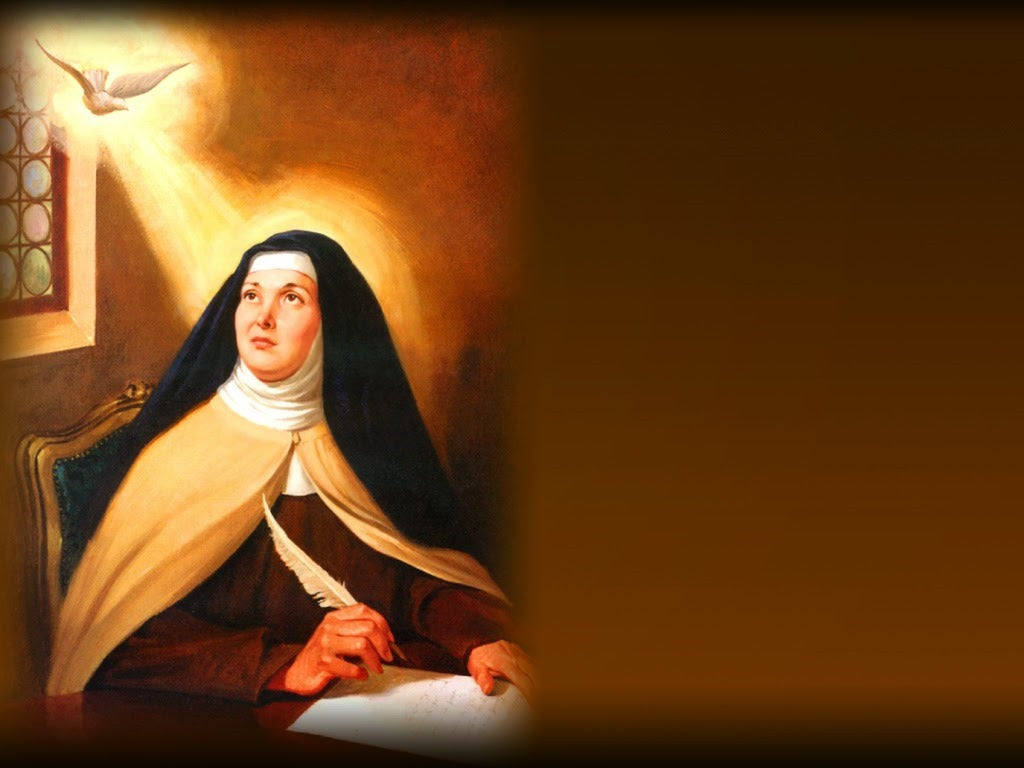Saint Teresa of Avila, also known as Teresa of Jesus, was a remarkable 16th-century Spanish Carmelite nun, mystic, writer, and reformer. Her life story is a testament to the power of faith, spiritual transformation, and the enduring impact of one woman's dedication to her religious beliefs. Let´s explore the life, teachings, and enduring legacy of Saint Teresa of Avila.
Early Life and Spiritual Awakening
Teresa Sánchez de Cepeda y Ahumada was born in Gotarrendura, Spain, on March 28, 1515. Raised in a devout Catholic Christian family, she showed an early interest in religion and prayer. However, her faith truly deepened when, at the age of 20, she entered the Carmelite Convent of the Incarnation in Avila. This pivotal moment marked the beginning of her spiritual journey.
Teresa's years in the convent were not without challenges. The Carmelite order was experiencing a decline in its strict observance of the Rule of Saint Albert, leading to a more comfortable and less contemplative way of life. This troubled Teresa, and she longed for a more profound connection with God.
The Interior Castle: A Glimpse into Her Spirituality
Saint Teresa of Avila's most famous work, "The Interior Castle" (El Castillo Interior), offers a profound insight into her spirituality and mystical experiences. In this spiritual masterpiece, she describes the soul's journey toward God as a metaphorical castle with seven mansions, each one representing a different stage of spiritual growth. The deeper one delves into the castle, the closer they come to a profound union with God.
Teresa's writings emphasize the importance of self-examination, prayer, and contemplation as means to draw closer to the divine. She describes mystical experiences such as raptures and ecstasies, which were signs of God's presence and grace.
Reforming the Carmelite Order
Teresa's longing for a more contemplative and ascetic life led her to embark on a mission of reform within the Carmelite order. She founded the Discalced Carmelite Order (Discalced meaning "shoeless" or "barefoot") with the help of Saint John of the Cross, a fellow mystic and reformer. The Discalced Carmelites aimed to return to the order's original, stricter way of life, emphasizing poverty, prayer, and solitude.
Teresa's reform efforts faced opposition from some within the Carmelite order, but she persisted in her mission. Her dedication to reforming the Church earned her the title of "Doctor of the Church" in 1614, recognizing her contributions to Catholic theology and spirituality.
Canonization and Spiritual Heritage
Saint Teresa of Avila's legacy endures to this day. Her writings continue to inspire countless individuals on their spiritual journeys. Her teachings on prayer, contemplation, and the mystical union with God have left an indelible mark on Catholic Christian spirituality.
In 1614, she was canonized by Pope Gregory XV, and in 1970, she was declared a Doctor of the Church by Pope Paul VI, becoming the first woman to receive this honor. Her feast day is celebrated every October 15th, a day that allows Catholic Christians to reflect on her profound spirituality and the enduring impact of her life.
As we celebrate her life, we are reminded that the path to God is not always easy, but with faith and perseverance, we can find our way to the innermost chambers of the spiritual castle, just as she did.




















